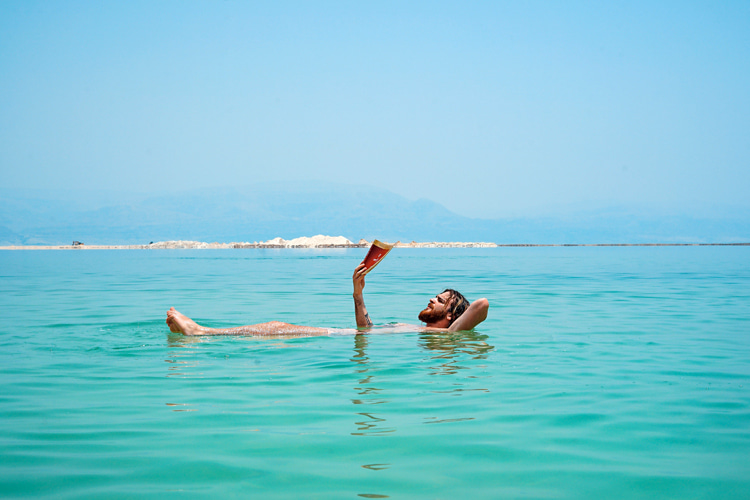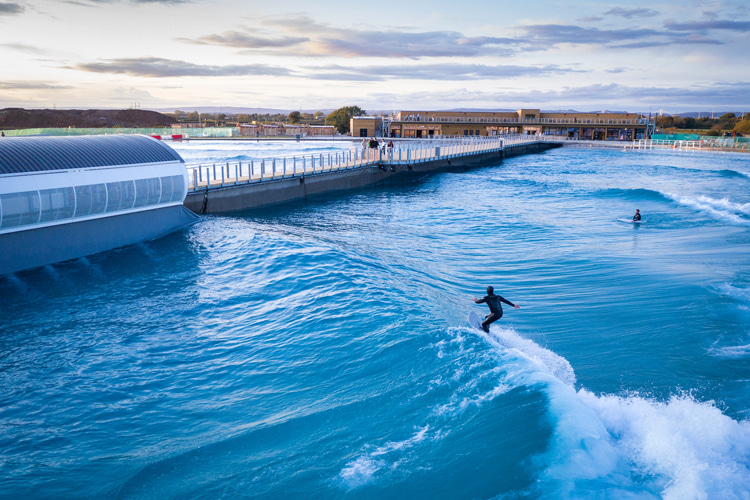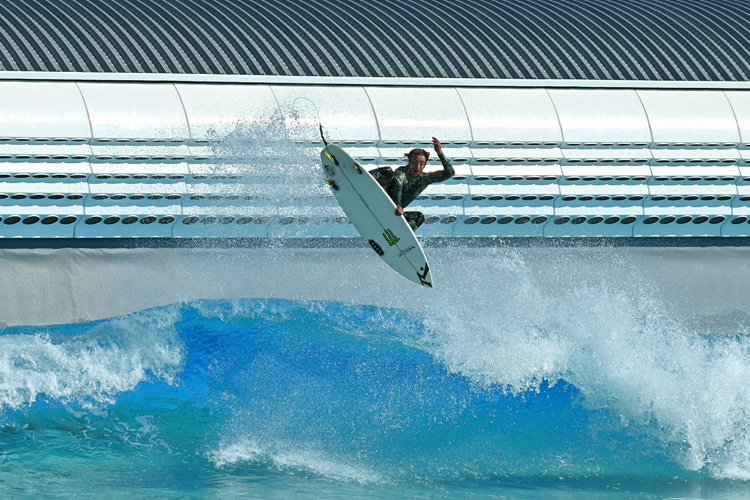There is a considerable difference between surfing in a saltwater ocean wave and riding a board in a wave pool. The keywords of this equation are density and buoyancy.
If you visit the Dead Sea and go for a dip, you'll notice a feeling similar to astronauts when they experience an absence of gravity.
It seems like there's an unusual force pulling you upward - you're floating effortlessly and with no need to tread water.
On the opposite side of the spectrum, a swimmer will perceive that it is harder to stay afloat and move in a chlorine-cleaned freshwater pool.
So, what are the variables of physics at stake? Why do oceans and pools have distinct buoyancy levels?
Buoyancy is the ability of an object to float in a liquid or fluid.
The buoyancy of an object in water is affected by various factors, including the density of the liquid and the volume and weight of the object.

Salt vs. Chlorine
Here are some of the main differences between buoyancy in saltwater and freshwater:
- Salinity: The salt content of water can affect its density and, therefore, its buoyancy. In general, the higher the salt content, the greater the buoyancy. The salinity of the Atlantic Ocean ranges from around 34 to 37 parts per thousand (ppt), while the Indian Ocean has a salinity range of around 32 to 37 ppt. As for the saltiest seas, the Dead Sea, which is actually a salt lake rather than a sea, is the saltiest body of water on Earth, with a salinity of around 300 ppt;
- Density: Saltwater is denser than freshwater, which means that objects like surfboards will float more easily in saltwater. This is because the denser the liquid, the more buoyant the object will be;
- Weight: The weight of an object also affects its buoyancy. In saltwater, an object will weigh less than in freshwater because of the additional buoyancy provided by the denser water;
- Volume: The volume of an object also affects its buoyancy. Boards with greater volumes will displace more water and be more buoyant than those with smaller volumes;
- Dive Depth: The buoyancy of an object in saltwater versus freshwater can also affect diving. In saltwater, divers may need to add more weight to offset the increased buoyancy, while in freshwater, less weight may be needed. The same applies to surfing's duck dive - more effort should be made to get the board underwater;
- Equipment and Materials: The density of equipment and materials used for activities like surfing or diving should also be taken into account when operating in saltwater or freshwater;

Compensating Buoyancy Gaps: Volume and Length
Should surfers use boards with more volume in freshwater wave pools to compensate for the lack of density compared to saltwater ocean waves?
Yes, they should.
As mentioned earlier, freshwater is less dense than saltwater, which can affect buoyancy and how boards and surfers interact with the water.
In a wave pool, the waves are created artificially, which means they may not have the same energy, power, or size as waves in the ocean.
As a result, it can make it more challenging for surfers to generate speed and maintain momentum, which is why some surfers choose to ride boards with more volume in wave pools.
But above all, a board with more volume will be more buoyant and float more easily in the less dense freshwater, making it easier for the surfer to catch waves and maintain speed.
The extra volume can also provide more stability and help the surfer stay balanced, especially in surf parks where waves are smaller and less powerful.
However, the volume a surfer needs will depend on various factors, including the size of the wave pool, the size and power of the waves, and the riders' skill level, weight, and height.
Surfers may need to experiment with different board volumes to find the one that works best for them in a particular wave pool.
What about length? Should they also get longer surfboards for wave pools?
Length and volume are two variables that can be balanced or adjusted to get the right equipment for a wave pool.
If a board is too short, it should at least have a generous volume; if a board is long, the volume (in liters) could be minimized.
In general, longer surfboards are better suited for generating speed in smaller, weaker waves.
The added length can provide more surface area, which allows the surfer to paddle faster and generate more speed, even in less powerful waves.
However, in larger, more powerful waves, shorter surfboards may be more suitable as they are more maneuverable and easier to turn.
In surf parks, the waves are typically smaller and less powerful than ocean waves, so using a longer surfboard can be beneficial for generating speed and maintaining momentum.
Nevertheless, surfers should also consider other factors, such as the board's shape and fin setup and their personal preferences and abilities.
In conclusion, theoretically, it is harder to pull off an air maneuver in a wave pool than in the ocean. Blame it on the water density.

Water Temperature and Water Density
And what about the water temperature? Does it influence buoyancy in saltwater and freshwater?
Yes, the water temperature can also influence buoyancy in both saltwater and freshwater.
In colder water temperatures, water becomes denser, which increases the buoyancy of objects in the water.
This is because the molecules in colder water are more closely packed together, which makes it more difficult for objects to displace the water and sink.
Conversely, in warmer water temperatures, water becomes less dense, which decreases the buoyancy of objects.
This is because the molecules in warmer water are more spread out, which makes it easier for objects to displace the water and sink.
In saltwater, the water temperature can also affect buoyancy by changing the salinity and density of the water.
Warm water tends to have lower salinity than colder water, which can reduce the density of the water and make it less buoyant.
In freshwater, the water temperature can affect buoyancy in a similar way, with warmer water being less dense and less buoyant than colder water.
Therefore, water temperature is a relevant consideration for surfers, as it can affect buoyancy and how they interact with the wave.
So, does that mean that cold water ocean waves are on the opposite side of the density spectrum compared to warmer freshwater wave pools?
In general, colder ocean water is denser and more buoyant than warmer freshwater in a wave pool.
This is because colder water has a higher density due to the greater concentration of dissolved minerals, salts, and other substances.
The colder temperature of ocean water can also have an impact on wave dynamics.
Colder water is more viscous and can slow down the propagation of waves, which can make ocean waves more powerful and challenging to surf.
In contrast, wave pools are usually filled with warmer freshwater, which is less dense and less buoyant than cold ocean water.
The reduced density of freshwater can make it more challenging for surfers to generate speed and maintain momentum.
However, it's important to note that wave pool technology has improved in recent years, and many modern facilities can now produce waves with more power and size, which can make them more comparable to ocean waves.
Additionally, surfers can adjust their equipment and techniques to compensate for the differences in buoyancy between saltwater and freshwater, as well as the effects of water temperature on flotation.
